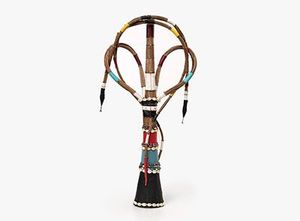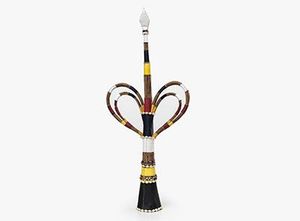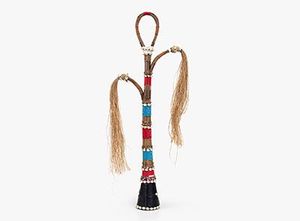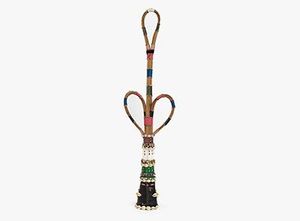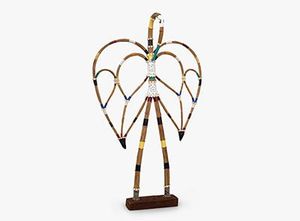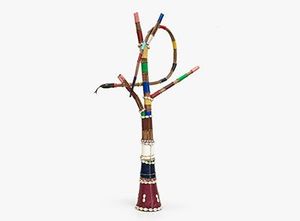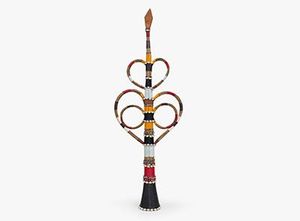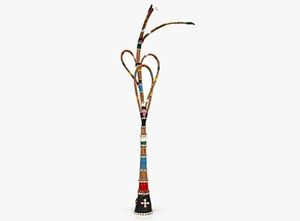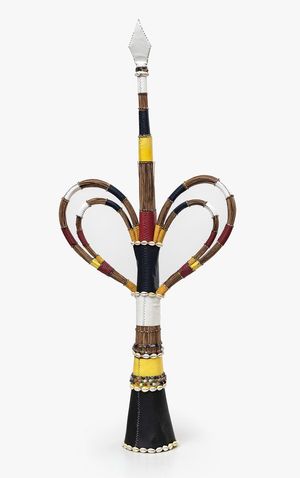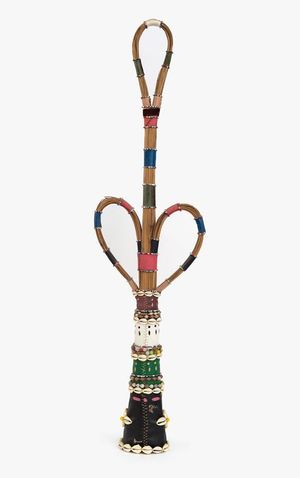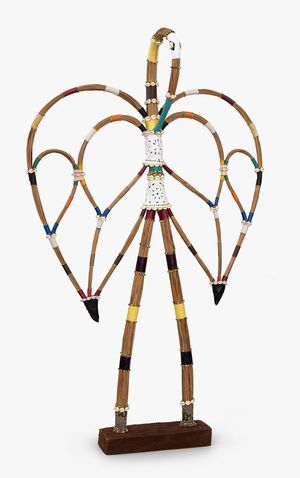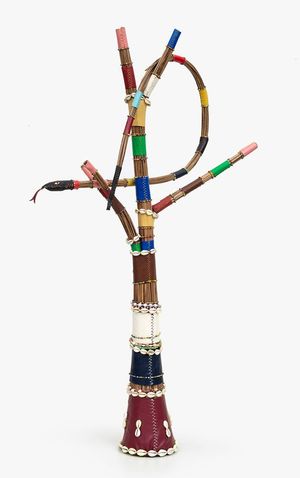Besides being a sculptor and writer, Mestre Didi was an important researcher and religious leader, and carried out work of great relevance to studies on sacred art linked to Afro-Brazilian religions. His entire oeuvre is linked to the Nagô universe, a people of Yoruba origin. His sculptures, made predominantly from organic materials, straw, wood, metal, bamboo, cowries, and beads, are heirs to the traditional art and liturgical objects of the Yoruba people, as well as symbolic representations of entities from the cult of ancestors. Elements from the Yoruba visual culture, such as birds, snakes, spears, and flames, are reworked by the author into pieces that evoke the ancestry, entities, and narratives of this African people's religion.
He was born in Salvador in 1917, the son of tailor Arsenio dos Santos, known as "Paizinho", and Maria Bibiana do Espírito Santo, "Mãe Senhora", ialorixá of the Ilê Axé Opô Afonjá terreiro [House of worship]. Mestre Didi was initiated into the cult of Egungun, which represents the male ancestors of the Oyó tradition. From an early age, he was interested in the origins and studies of Candomblé rituals, having also learned the Yoruba language. He was part of the Ilê Axé Opô Afonjá terreiro up until his trip to West Africa, when he visited the kingdom of Ketu (which includes the territories of Nigeria, Benin and Togo) and received the title of Alapini, high priest of the Egungun cult, after which he founded the terreiro Ilê Asipá.
He published his first Yoruba-Portuguese dictionary in 1946, which led to the creation of the department for the study of the Yoruba language at the Federal University of Bahia in 1960. In 1961, he published a collection of ancestral African folk tales entitled Contos Negros da Bahia, a book with illustrations by Carybé. Throughout the decade, he published several other books. In 1964, he presented his first sculpture exhibition at Galeria Ralf in Salvador and the Emblemas de Orixá exhibition at Galeria Bonino in Rio de Janeiro.
Throughout his career, Mestre Didi has held several solo exhibitions, and took part in collective exhibitions such as the 1a Bienal de Artes Plásticas held at the Convento do Carmo in Salvador (1966); the International Exhibition of Afro-Brazilian Art, presented in Nigeria, Ghana and Senegal; A Mão Afro-Brasileira (The Afro-Brazilian Hand), held at the Museu de Arte Moderna in São Paulo (1988); Mostra do Redescobrimento: Brasil + 500, at the Fundação Bienal de São Paulo (2000); as well as international group shows such as Art in Latin America, at the Hayward Gallery, London, in 1989; Magiciens de la Terre, held at the Centre Pompidou in Paris in the same year; and Brazil: Body and Soul, at the Guggenheim, New York (2002). Mestre Didi's work is part of the collections of major institutions in Brazil, such as the Museu Afro Brasil; Museu de Arte Moderna do Rio de Janeiro - MAM RJ, Museu de Arte de São Paulo Assis Chateaubriand - MASP, among others.


